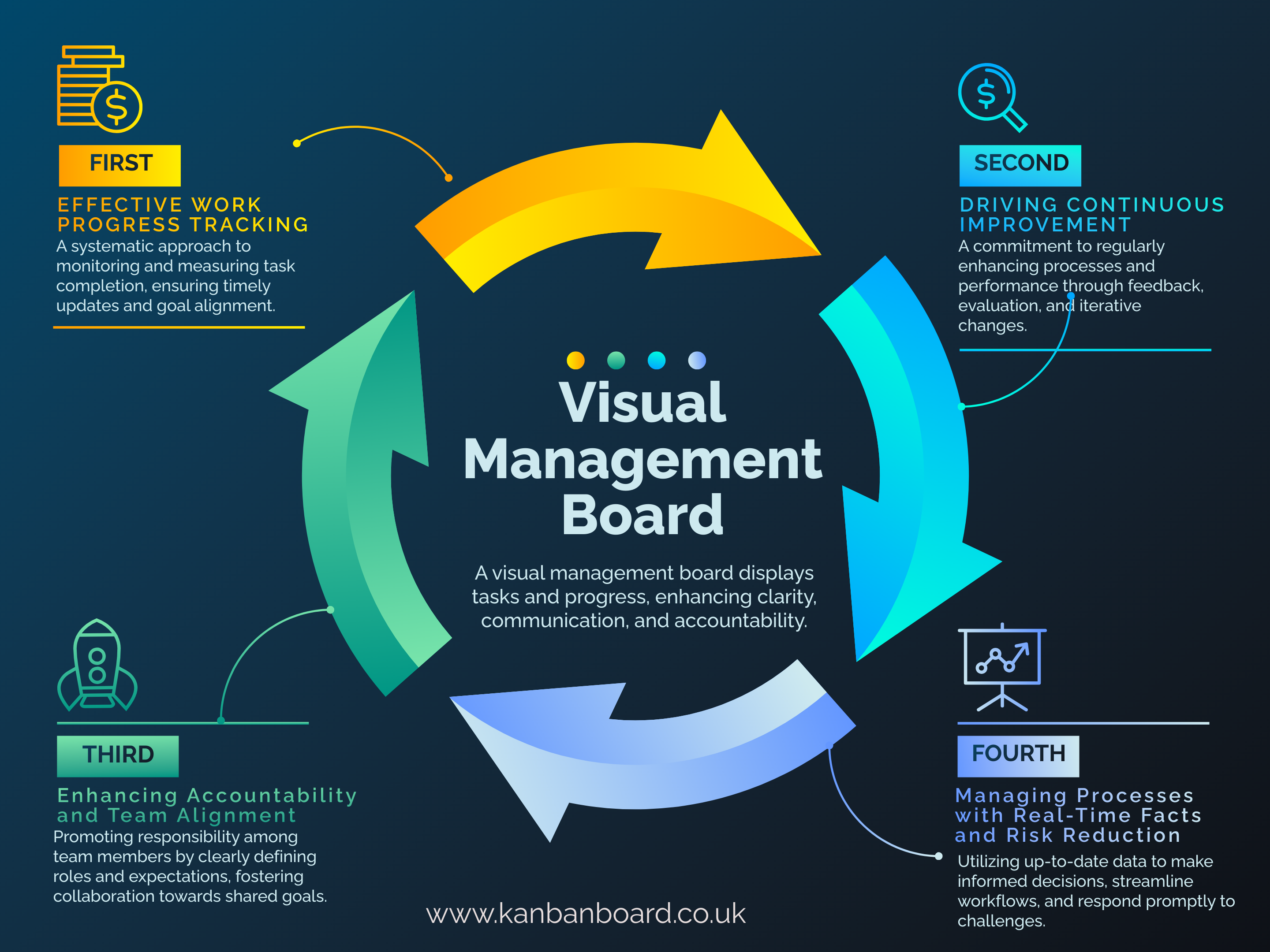In an era where project complexity continues to grow, organizations are constantly seeking more efficient ways to manage tasks, collaborate, and achieve project goals. Visual project management (VPM) has emerged as a leading methodology that leverages visual tools and techniques to simplify project oversight and boost team productivity. By turning project data into visual elements—such as charts, boards, and diagrams—visual project management enables clearer communication, faster decision-making, and improved workflow transparency.

What Is Visual Project Management?
Visual project management is a method that focuses on using visual aids to represent various aspects of a project, from individual tasks to overall project progress. Instead of relying on dense text documents, long spreadsheets, or complex verbal updates, project managers and teams utilize visual tools that provide an at-a-glance understanding of the project's status. The core idea is that visual representations are more intuitive and accessible, reducing the cognitive load required to comprehend large volumes of information.

Visual project management encompasses several visual tools, such as boards that track the status of tasks, charts that illustrate timelines, and diagrams that map out workflows. These tools allow for greater clarity and alignment across teams, making it easier to identify bottlenecks, prioritize tasks, and coordinate efforts.
Key Components of Visual Project Management
Visual project management offers a variety of tools and techniques, each serving a distinct purpose in the project lifecycle. Here are some of the most commonly used visual elements in this approach:
- Task Boards: These visual boards display tasks organized into categories such as "To Do," "In Progress," and "Completed." They provide a clear snapshot of the project's current state, offering real-time updates on who is responsible for what and what tasks need attention.
- Timelines and Roadmaps: A visual timeline helps project managers track the progress of tasks over time. It also aids in identifying dependencies between tasks, ensuring that key milestones are met in sequence. Roadmaps, on the other hand, offer a high-level view of long-term project goals, outlining the major phases and deliverables.
- Flowcharts: By mapping out the steps of a process or workflow, flowcharts make it easier to understand how various parts of a project connect. This allows teams to spot inefficiencies, make necessary adjustments, and streamline operations.
- Dashboards: Dashboards provide a comprehensive, real-time overview of key project metrics, such as task completion rates, team performance, and resource allocation. Visual dashboards allow project managers to quickly assess progress and make data-driven decisions.
- Mind Maps: A visual tool for brainstorming and organizing ideas, mind maps help teams break down complex projects into smaller, more manageable components. They also foster creativity by showing how different ideas or tasks are interconnected.
Benefits of Visual project management
Visual project management offers a wide range of benefits that contribute to the success of a project:
- Improved Clarity: Visual tools simplify complex information, making it easier for all team members to understand the current status of the project. This reduces miscommunication and ensures that everyone is on the same page.
- Enhanced Collaboration: Since visual tools are easily accessible and understandable, they encourage more effective collaboration among team members. Everyone can contribute to project updates, provide feedback, and see how their efforts contribute to the larger goals.
- Better Decision-Making: By having key project data represented visually, project managers can make more informed decisions. Visualizations help highlight trends, potential risks, and areas that need immediate attention, allowing for faster and more accurate responses.
- Increased Accountability: Visual tools make it easy to assign tasks and track their completion. This visibility into who is responsible for what ensures that team members are held accountable for their work, improving overall productivity.
- Faster Problem-Solving: Bottlenecks and delays are easier to identify with visual project management. When potential issues are clearly mapped out, teams can address them quickly, minimizing the impact on overall project timelines.
- Real-Time Updates: Visual project management tools are often designed to update in real time, providing instant feedback on task progress and project performance. This dynamic nature ensures that all stakeholders have the most up-to-date information at any given moment.
Emerging Trends and Tools in 2025
As businesses continue to adapt to new technologies and agile methodologies, visual project management is evolving to meet these changing demands. Here are a few emerging trends and advanced tools shaping the future of VPM:
- AI-Driven Insights: The integration of artificial intelligence (AI) into project management platforms will enable more predictive analytics, helping project managers anticipate risks, allocate resources more efficiently, and optimize workflows. AI-driven tools can analyze large datasets and present key insights in a visual format, making it easier for teams to act on the information.
- Hybrid Workflows: As remote and hybrid work models become the norm, visual project management tools are adapting to support distributed teams. Cloud-based platforms allow teams to collaborate in real-time, regardless of their physical location, ensuring that visual boards, charts, and timelines are always accessible and up-to-date.
- Interactive Visualizations: Future VPM tools will offer more interactive elements, allowing users to dive deeper into specific project components with just a click. Interactive dashboards and customizable views will empower project managers to tailor the visual representation of data to their specific needs.
- Integration with Other Systems: Project management tools are increasingly being integrated with other business systems, such as customer relationship management (CRM) and enterprise resource planning (ERP) platforms. This integration enables seamless data flow between systems, providing a more holistic view of the project’s impact on broader business objectives.
Conclusion
Visual project management represents a significant shift in how projects are planned, executed, and monitored. By leveraging visual tools, teams can enhance clarity, improve collaboration, and make better decisions, ultimately leading to more successful project outcomes. As technology continues to advance, the tools and techniques used in visual project management will become even more powerful, providing organizations with new ways to manage complexity and achieve their goals.